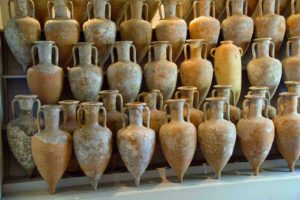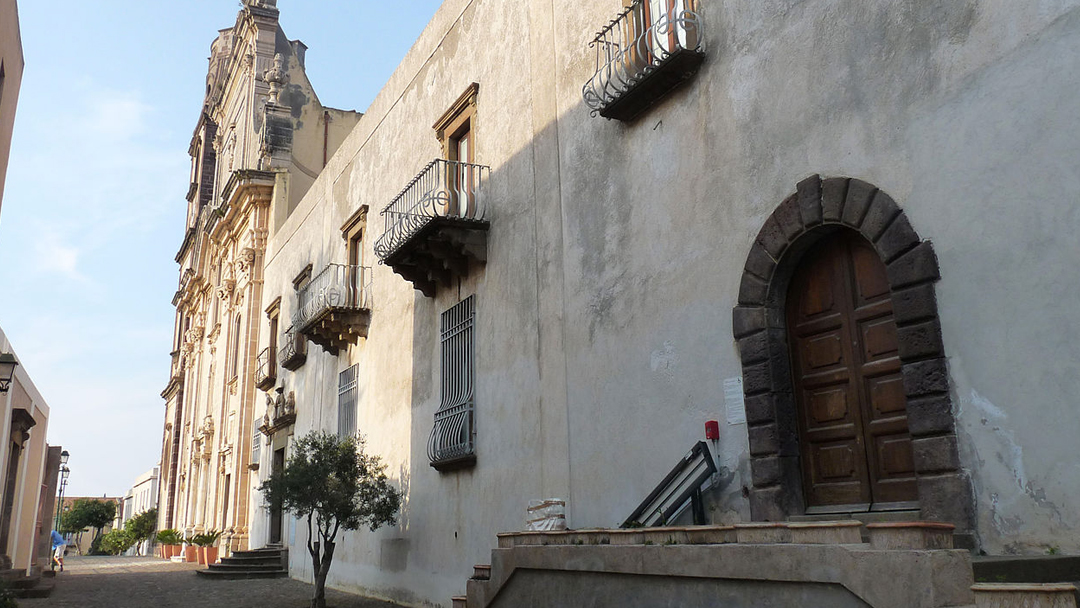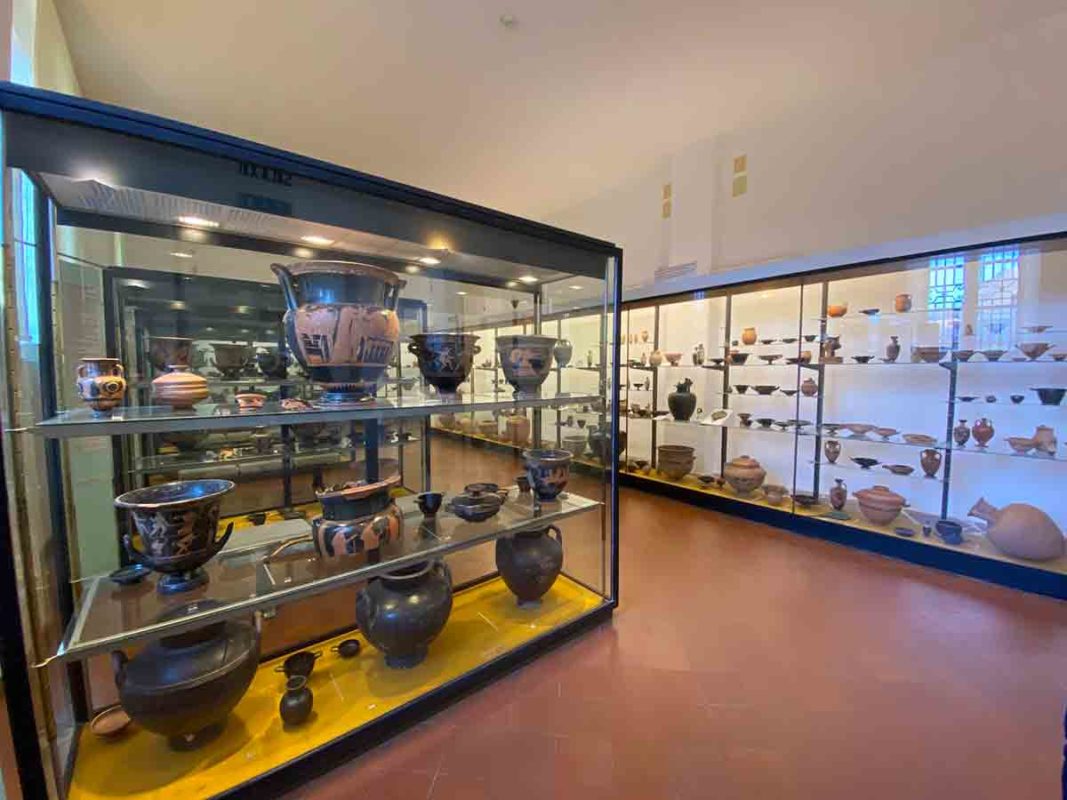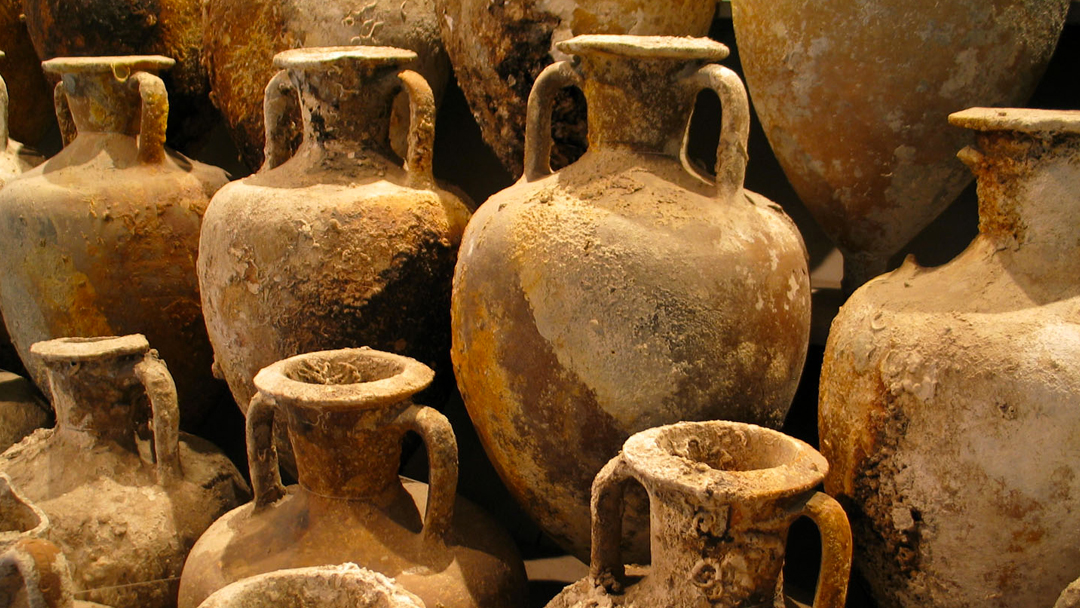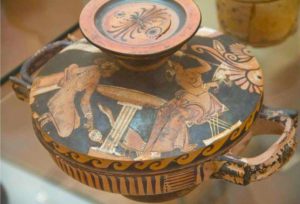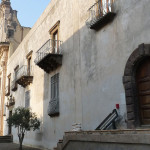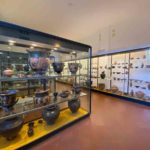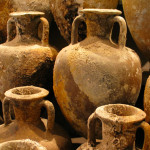Archaeological Museum of Lipari
The Archaeological Museum in Lipari - Luigi Bernabò Brea
[youtube https://www.youtube.com/watch?v=jBUnEKX0X68]
From Eschilo to Menandro – Two centuries of Greek theater in the exhibits of the Archaeological Museum of Lipari
Prehistoric pavilion. Located to the South of the Duomo, inside the Archibishop’s Palace (from the start of the XVIIIth century), founded on the remains of a Norman monastery; a notable part of the latter’s original structure is still visible along the west wall of room X.
Prehistoric Lipari (settlements at the Castle and in other island sites), and Greek and Roman layouts.
Room I: Middle Neolithic. First phase of Neolithic Eolie (Castellaro vecchio culture). Second phase of Neolithic Eolie.
Room II: Middle Neolithic: third Neolithic Eolie phase. Superior Neolithic: Diana culture.
First Eneolithic phase: Diana-Spatarella style.
Room IV: Middle and superior Neolithic. Piano Conte culture. Piano Quartara culture.
Room V: first Bronze Age. Capo Graziano culture (in particular the necropolis and crematorium of the Diana district).
Room VI: first Bronze Age: Capo Graziano culture (based on the Castle). Middle Bronze Age. Milazzese culture (based on the Castle).
Room VII. Late Bronze Age. Ausonio I (based on the Castle). Ausonio II (Piazza Monfalcone necropolis).
Room VIII: late Bronze Age. Ausonio II (based on the Castle). Room IX: Ausonio II (based on the Castle).
Room X: Greek Lipàra layout and the successive Roman city (also displayed are the Eolo’s bothros exhibits).
Prehistoric pavilion garden (accessible from room X). On the north side and east walls of the Norman monastery.
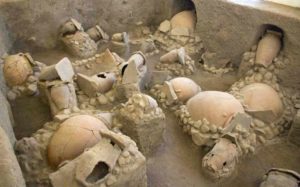
Epigraphic Pavilion. On the south side, inside a recent construction numerous funeral grave and tombstones are preserved, with for the most part Greek inscriptions (the names of the deceased with in some cases messages of devotion and farewell) of the Greek and Roman necropolis in the Diana district. Some gravestones are found in the garden together with necropolis sarcophagi.
The minor islands Pavilion. Located in a recent building opposite the prehistoric pavilion. From room XI (entrance) to XV: in chronological sequence are exhibited prehistoric settlements of the Aeolian archipelago’s minor islands (Salina, Filicudi, Alicudi, Panarea, Stromboli), from the Middle Neolithic to the Middle Bronze Age, mostly cited in the text. Adjacent to the minor islands Pavilion, inside a XVth century house the Vulcanological section is hosted, developed by L. Bernabò Brea and by the vulcanologist A. Rittman (for study purposes only), currently being restored and extended as part of Prof. V. Cabianca’s project. (Ground floor: Archeology and Vulcanism; first floor: General vulcanism; second floor: Aeolian vulcanism).
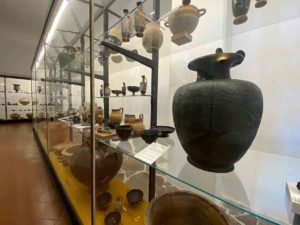
Classical Pavilion. Situated to the north of the Cathedral, in a restored and enlarged fascist detention camp building (the three enlarged rooms on the eastern side were refurbished and fitted out based on a project of F. Ceschi and E. Torca, architects).
Section of Milazzo architecture. Room XVI: Middle Bronze Age necropolis of the Caravello property (with a reconstructed excavation set). Room XVII: Protovillanovian necropolis and Greek necropolis (Mylai, Chalcidice colony founded by Zancle) of Istmo, with restructed tomb. Room XXVIII: Greek necropolis. Room XIX: reconstruction of the Ausonio II necropolis at Piazza Monfalcone on Lipari. Room XX: Greek necropolis of the Diana period on Lipari (sarcophagi, large vase containers of eternal outfits or of tombs or gravestones with inscriptions).
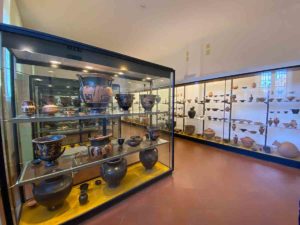
Underwater archeology section. Room XVII: Exhibits are displayed of the rich underwater Aeolian island archeological settings. From Lipari’s waters: a ceramic cargo load from the first Bronze age- the ancient period of the Capo Graziano culture – from Pignataro di Fuori, wreck of Secca di Capistello from the end of the IVth century B.C. etc; Filicudi – Secca di Capo Graziano: wreck F., from the first half of the IIIrd century B.C.; Roghi wreck, from the first half of the IInd century B.C.; from Panarea, Bound wreck at Dattilo, from the start of the IVth century B.C.; Alberti wreck, form Le Formiche, from the second half of the first century A.D. etc. Salina, Vulcano.
